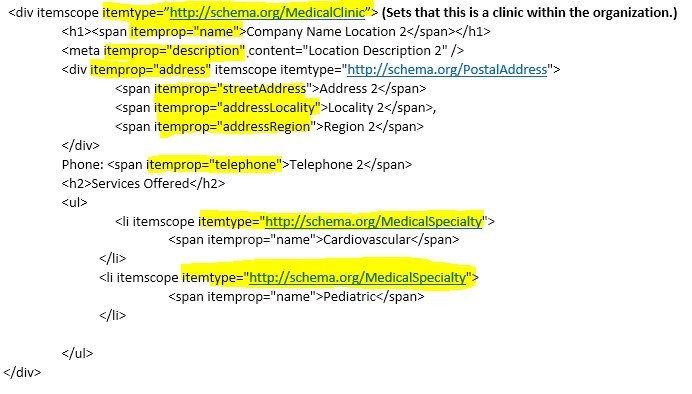Voice Search Redefines The Healthcare Consumer Experience
“I’m Sorry, Dave, I’m Afraid I Can’t Do That…Yet.”
// By Keir Bradshaw //
 In 1968, MGM Studios released the Stanley Kubrick/Arthur C. Clarke movie 2001: A Space Odyssey. Although not the first representation of voice interaction with computer-based artificial intelligence, the narrative elements between the lead characters, Dave and HAL 9000, foreshadow the aspirations and frustrations we are realizing today in modern voice search devices.
In 1968, MGM Studios released the Stanley Kubrick/Arthur C. Clarke movie 2001: A Space Odyssey. Although not the first representation of voice interaction with computer-based artificial intelligence, the narrative elements between the lead characters, Dave and HAL 9000, foreshadow the aspirations and frustrations we are realizing today in modern voice search devices.
Whether you’re asking Siri, Alexa, your Google Assistant, Bixby, or Cortana, user expectations for search and exploration on the web are quickly changing from keyboard/touch-based input to vocalization and audio response.
For healthcare marketing professionals, there are three important questions to ask when considering voice search:
- Is this a fad or a trend?
- How does voice search apply to healthcare organizations and their digital properties?
- Which tools will increase relevance in voice search?
Knowing the answers to these questions will ensure that you’re prepared for the future-state of voice search.
Is Voice Search Here to Stay?
There are a few key statistics we can look at to try to understand if voice search is a passing trend or a new paradigm in human/computer interaction.
According to Gartner, by 2020, 30 percent of all browsing sessions will be done without a screen. The most impressive aspect of this statistic is that it applies exclusively to “voice only” interactions such as with Amazon Echo, Apple Homepod, and Google Home, and does not include hybrid screen/voice interactions through smartphones, tablets, and computers. If hybrid interactions were added, the total number of voice-based searches would be significantly higher. ComScore reports that as much as 50 percent of all web searches will be performed by voice by 2020.
Not only is voice search here to stay, but if you consider cross-device compatibility, voice search equates to a new browser or device that half of your consumers will interact with, and as many as 30 percent will rely on without use of an alternate device.
As a digital veteran, I’m very much reminded of the evolution from mobile websites with limited content to the implementation of fully responsive “mobile-first” websites that present a robust and complete version of the organization’s website and digital properties.
How Does Voice Search Apply in Healthcare?
This is a question that healthcare marketing professionals seem to ask daily. With every new technology, mode of interaction, or digital tool, we are challenged to find the correct and most impactful healthcare application. The specifics of each are different, but the strategies employed for success are the same:
- Audience: Identify your users and their motivations.
- Align: Create tactics that complement user needs and expectations.
- Augment: Measure the success of these results and adjust for success.
The same basic strategies can be applied to voice search. In traditional web journey mapping, we typically define three primary paths to conversion:
- Finding a provider by name or specialty
- Seeking information about services, classes, or health topics
- Attempting to retrieve information about locations based on services offered, distance, wait time, or availability
The user has already asked the question. The difference is in the way we provide the information and how we optimize for the search.
Users are motivated to find information about services, providers, or access. Users who conduct voice-based searches are performing the same tasks as a screen-based user.
This leads to a final question.
Which Tools and Tactics Are Available for Communicating with Voice-Search Users?
Voice search is still in its infancy. If we look back only two-and-a-half years ago:
- Amazon Echo was a brand-new product viewed as the next evolution of the Kindle.
- Siri was a novelty that was used primarily to ask simple (or even funny) challenge/response questions.
- Google Home was just being announced and released.
This means that we are only now learning how to define and shape user experience in voice-based search. We can expect the trend to continue and capabilities to become more sophisticated.
There are two primary tools we can leverage today to help increase chances of connecting and aligning with end users, and to present content:
- Implementing voice-based search engine optimization (SEO)
- Developing voice-based apps
Voice-Based Search: SEO Rules Still Apply
In some ways, this is more important than on display-based search. When looking at traditional SEO, we’re often competing to be in the top-three results on page 1 on Google. In voice-based search that isn’t triggered through a mobile device, the user is often presented only one result. So how do we rank highest in search?
All the standard tactics, including keyword relevance, domain authority, technical infrastructure, and quality of content still play an important role in voice search. In addition, structured data, commonly referred to as schema, provides a new way of communicating rich and robust information to voice-enabled search devices.
Schema.org markup is a type of data known as microdata that allows web developers to communicate information to devices and search engines that is not visible to the user. The classic example of this type of data would be page title, meta description, and meta keywords. In nontechnical terms, we can define certain elements of our content as being relevant to commonly searched terms or categories.
A good example of how structured data applies to healthcare would be when users search for care “near me.” When a user initiates a voice search such as “Okay, Google, find an open urgent care near me,” you can provide additional information to help the search engine recognize your location as a match.
Below is a representation of schema data as applied to one location on a webpage (which may have many).

The highlighted information tells the search engine that:
(a) This is a location
(b) This location is a medical clinic
(c) The specifics around the address, phone number, hours, specialties, and services offered are all defined on the page
This information, coupled with traditional SEO best practices, will significantly increase your chance of being the first result presented.
Schema implementation is a complex and potentially challenging undertaking. Finding a partner that understands the priorities in healthcare and the correct application of web technology is key to success.
Voice Apps
Like mobile devices, it is possible to develop apps for smart speakers and voice devices. Each has a different name, such as Alexa Skill or Google Action. But they all provide a common user interaction. Using a key phrase, your user can invoke commands with predetermined actions or behaviors specified by you.
In the example above, we could change the user-initiated phrase to “Okay, Alexa, can you ask Baptist Health what the wait time is at the urgent care nearest me?” In this scenario, only the curated content you specify in your Alexa skill is given to the user. This gives you greater control, interactivity, and exclusivity of the interaction.
The challenge with voice apps is the same issue we face with mobile apps. Your app has to offer a value that carries it beyond the novelty of a one-time use. Typically, you should run every app idea through this litmus test. Does the app offer:
- Information that is not on the website? Does it provide a significant improvement in convenience?
- Functionality that is not already present on the mobile site?
- A high-level, reuse, or personalized presentation of information?
If a mobile app doesn’t pass this test, it’s usually not going to offer significant value over a great mobile-responsive website.
Voice apps offer the same challenges. If we can’t provide a value above and beyond the website, users will be more likely to interact through organic search. This further emphasizes the need for a good voice SEO strategy.
What Does All This Mean?
The pace and level of commitment may vary from organization to organization, but it’s important to add these questions to your existing search strategy discussions, and start developing a plan to ensure your healthcare organization can answer this question: What are my voice search goals for my healthcare organization?
Keir Bradshaw joined MERGE Atlanta in 2011 and brings a strong background in healthcare IT and more than 16 years of web and application development experience. Having also worked in academic research and government environments, he understands the unique challenges facing hospitals in today’s digital age. As executive vice president, Keir’s priorities include overseeing development of new applications and web products, heading a team of talented developers and programmers, and helping clients develop strategies in web and digital technologies that empower their customers and enable them to achieve the marketing and business goals.


